How to design a parterre garden – key points to consider
Parterre gardens, with their decorative arrangement of beds and paths, make an elegant addition to backyards of traditional or modern homes
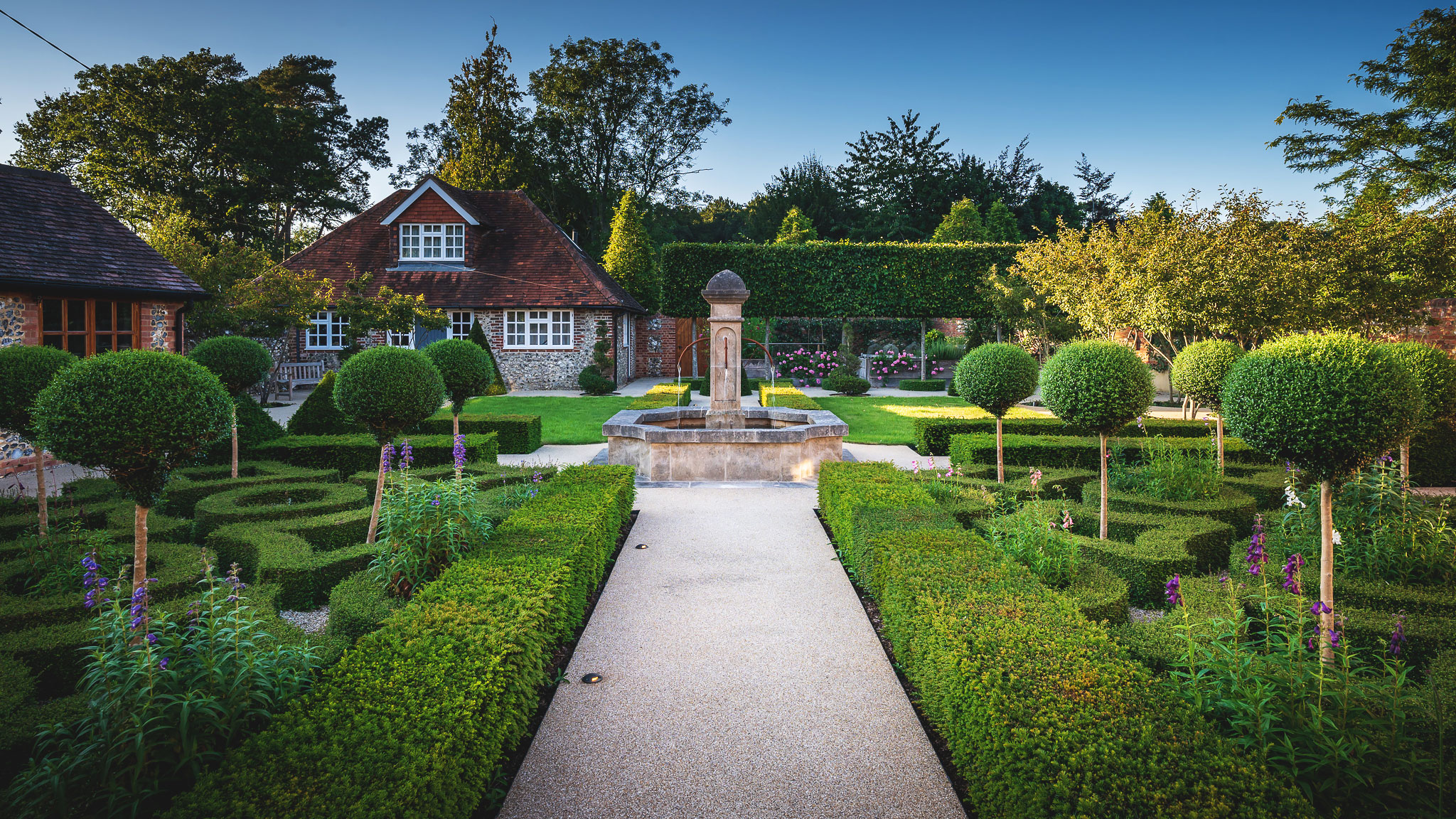

Parterre gardens can be designed into all sizes of backyards – from small courtyards to large country plots.
While they have a history dating back hundreds of years, parterre gardens work well within a contemporary backyard, too.
The pattern of a parterre garden is its most striking feature, and there are many interpretations of a parterre that can complement other backyard ideas. While they are a key element used in formal garden design, they can complement many styles of garden.
What is a parterre garden?
If you are about to plan a garden, and are curious about including elements of a parterre garden, it's useful to know that it's possible to include even in small yards – since it is distinguished by its ornamental pattern of symmetrical beds, traditionally enclosed and formed by low evergreen clipped hedges.
There are many styles and designs for parterre gardens among flower bed ideas, ranging from historic, embroidery-inspired and intricately fluid designs interlaced with gravel pathways, to more modern geometric flower beds within a lawn or paved area.
'Don’t feel you have to commit fully to historical style, but introduce elements to a parterre garden that traditionally wouldn’t have been there,' explains garden designer Richard Miers.
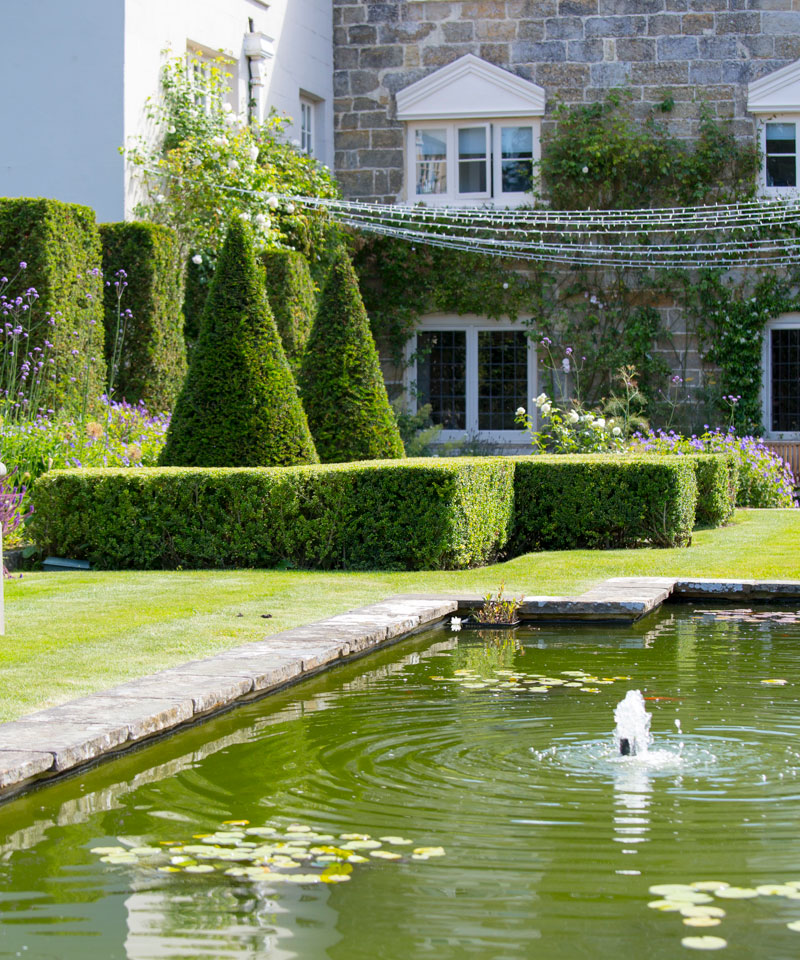
How do you design a parterre garden layout?
'Generally the complexity of a parterre garden will depend on several elements: the space available, your garden taste, the architecture of your home and the available time you have for maintaining and clipping the hedging,' explains garden designer Jo Alderson.
While you may think of a parterre garden suiting a large and grand traditional country home, they can work wonderfully along with other small garden ideas in urban backyards.
'The human eye loves repetition and this is what keeps the parterre style so timeless and a feature of gardens the world over,' agrees garden designer Richard Miers
'Traditionally the shapes were formal, but as gardening styles have evolved to become more informal, abstract, geometric shapes can work well – these look just as attractive and give a more classical contemporary feel to the design. Ultimately it has to fit the sense of space and place,' he adds.
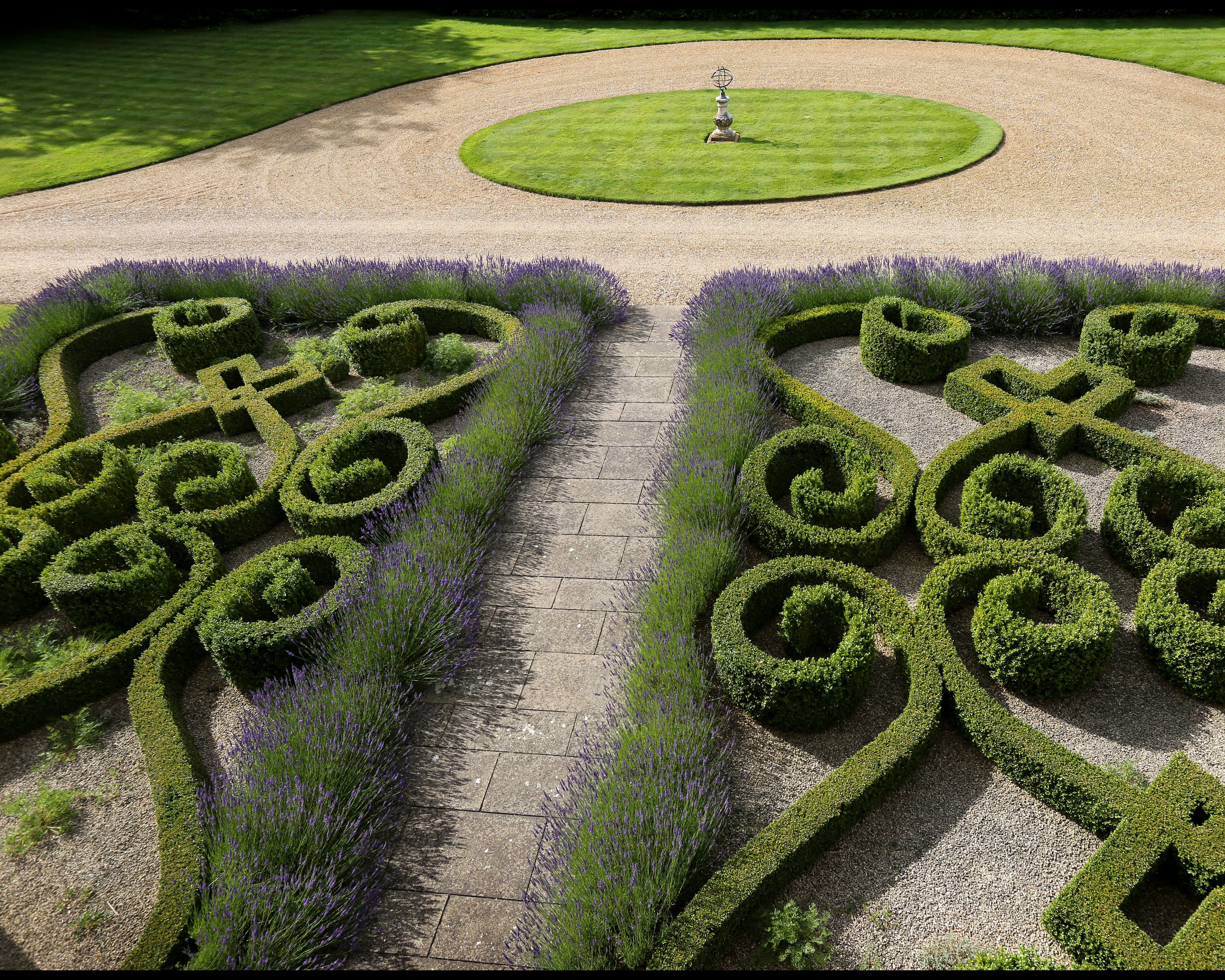
Where can you find inspiration for the design of a parterre garden?
Take inspiration from other elements in a backyard to create a parterre garden in harmony with its surroundings.
'It is usually sited close to the house, so an obvious steer comes from the property itself – ensuring the two are intrinsically linked is paramount,' explains Richard.
However, inspiration can also come from unexpected sources.
'This might be a wrought iron garden gate, or a detail on a bench – the parterre I designed above was inspired by an Italianate gate on the property. Look for the less obvious elements that might provide a link to the garden, but irrespective of the pattern that is settled upon, symmetry, order and flow should always dictate the overall design,' he adds.
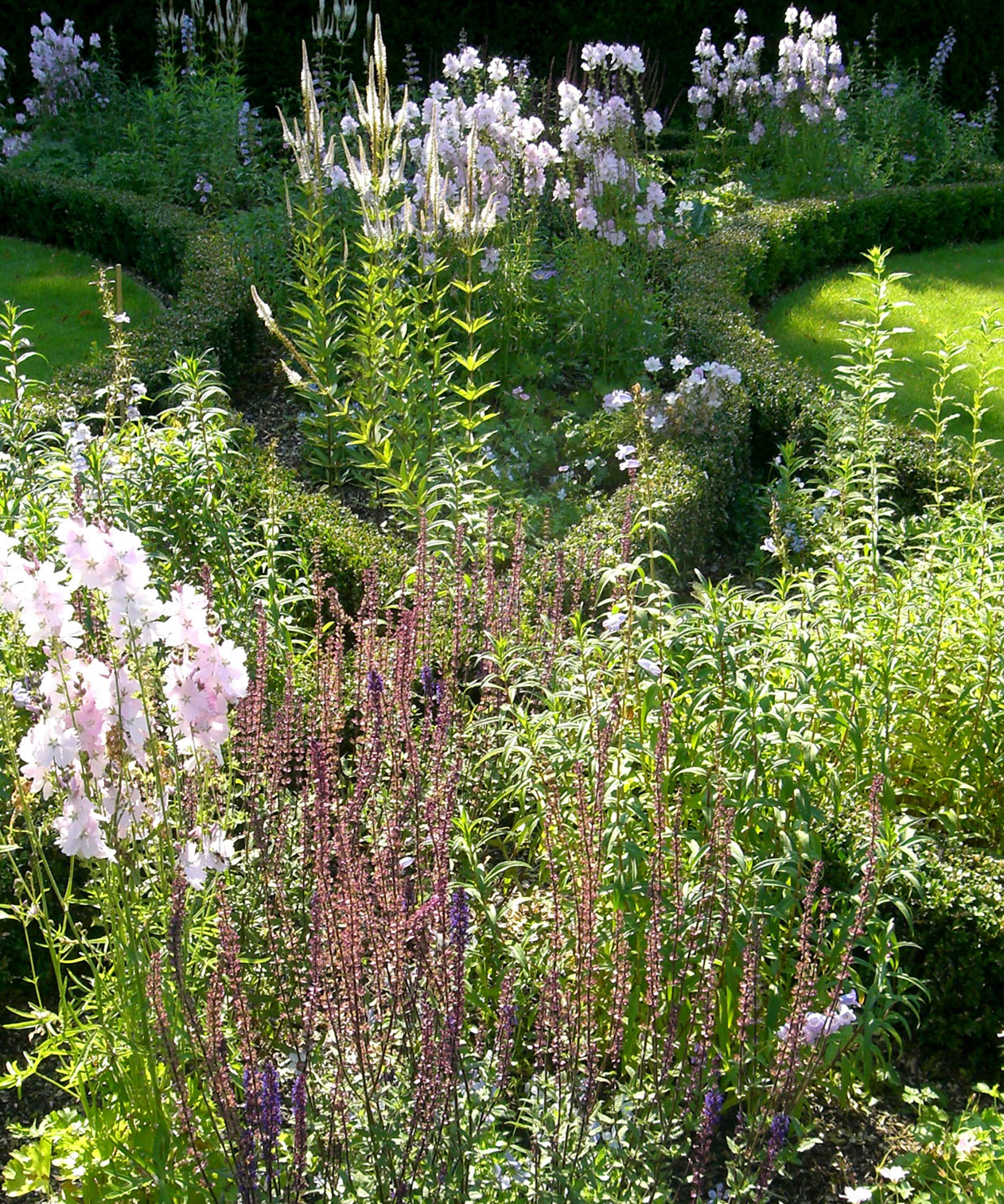
What can I plant in a parterre garden?
Traditionally, parterre gardens tended to be designed with hedging in an intricate pattern coming up through gravel or grass, and maybe the odd tulip planted within them.
'However, you can add herbaceous plants inside the garden edging ideas so there is something happening all year round,' explains Richard.
He suggests planting parterres with a mix of plants through the seasons, such as hellebores to roses, geraniums, asters, and repeat flowering summer and autumn bulbs,. 'Lilium regale and Nerine bowdenii ‘alba’ will continue and extend the flowering period until winter,' Richard explains.
The beds can be filled with ornamental flowers, replaced throughout the year to create constant colour and interest. Take a cue from the Victorians, who interplanted the formal designs with vibrant bedding plants such as heliotropes, pelargoniums, petunias, verbenas and salvias, or use less labour intensive and pollinator attracting perennials as a wildlife garden idea.
‘Consider silver-foliaged lavender for summer as well as a succession of spring and summer bulbs, including purple tulips, alliums, and agapanthus,’ advises designer Helen Taylor.
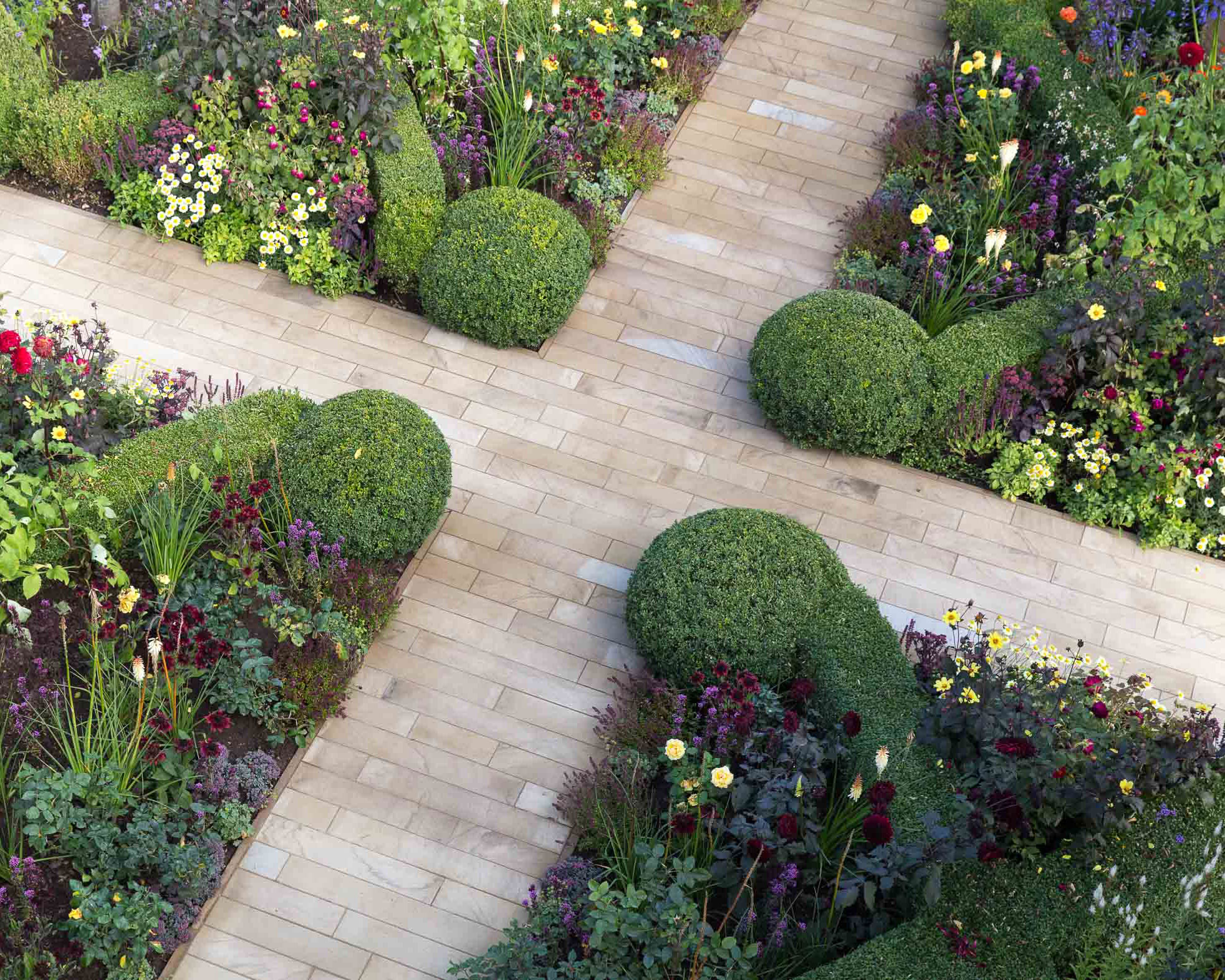
How do you plant a parterre?
Although the term parterre means ‘on the ground’, with the enclosed beds laid out on a level area, do not forget adding height to the design.
‘It is sometimes easy to forget the vertical garden ideas when designing a parterre, which can lead all the focus to the ground. In fact, layers of height are needed to make it as effective as possible,’ advises garden designer Jo Thompson.
Customarily evergreen box hedging, Buxus sempervirens, demarcated each bed of a parterre, but the use of this has been affected by box blight and caterpillar.
Fortunately there are some excellent alternatives that bring density, form and structure, ‘such as Ilex crenata, Taxus baccata, osmanthus or Lonicera nitida, which is a cheaper and largely disease-free choice that is both hardy and fast growing,’ recommends Jo Alderson.
Consider including topiary shapes within the design
'There is a range of euonymus to try, too, such as ‘Jean Hughes’, which is an excellent variety for low hedging,' says Richard Miers.
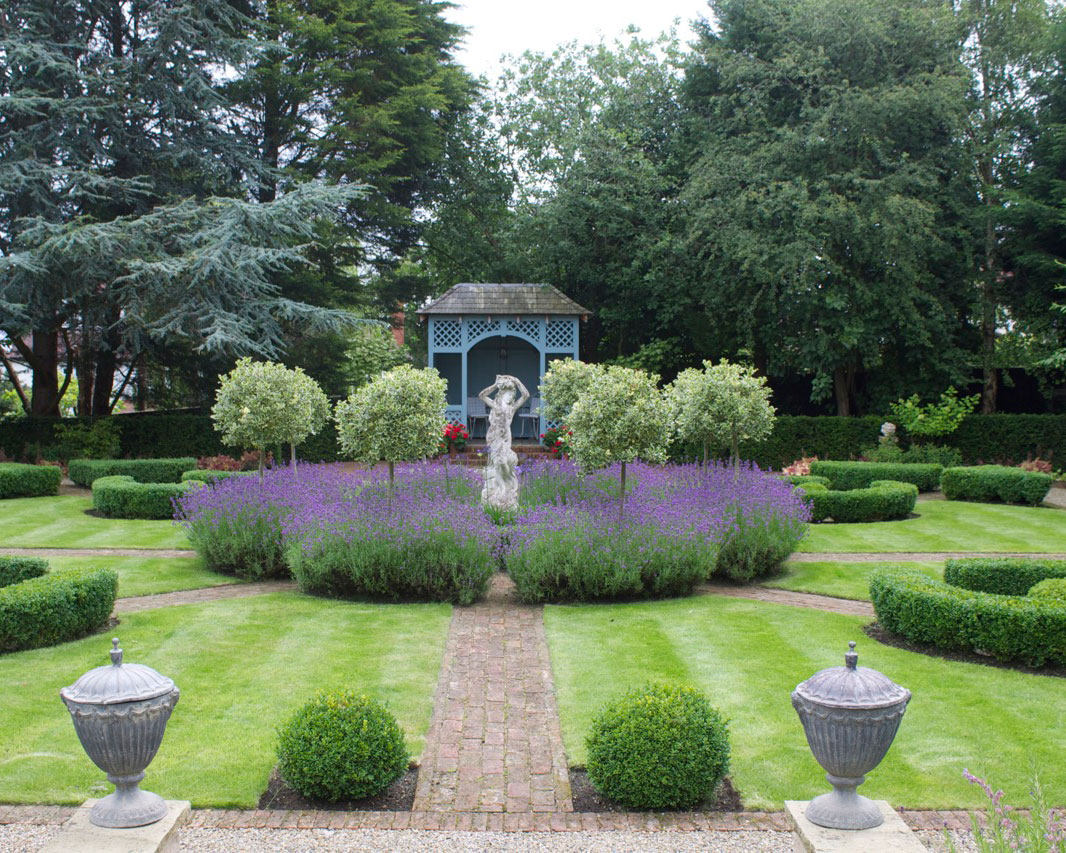
How can you design a modern parterre garden?
To give a parterre a more modern feel, why not 'think outside the ‘box’, when it comes to the choice of border planting,' says Richard.
'Pittosporum tenuifolium ‘Tom thumb’, which has deep purple leaves contrasting with light green fresh growth, will give a slightly edgier and darker look to a parterre,' he suggests.
'As well as the evergreens, I also like to use flowering hedges to give the eye something different to rest on. Lavandula angustifolia ‘Munstead’ or ‘Hidcote’ are both excellent varieties and also fill the air with heady scent, which is a perfect option for a parterre placed near the entrance of a house,' he adds. It is easy to learn how to grow lavender and it offers form, texture and aroma.
In terms of the layout and pattern of the parterre, 'if it is a contemporary house, for example, a simple grid layout of squares or circles works very well,' explains Jo Alderson.
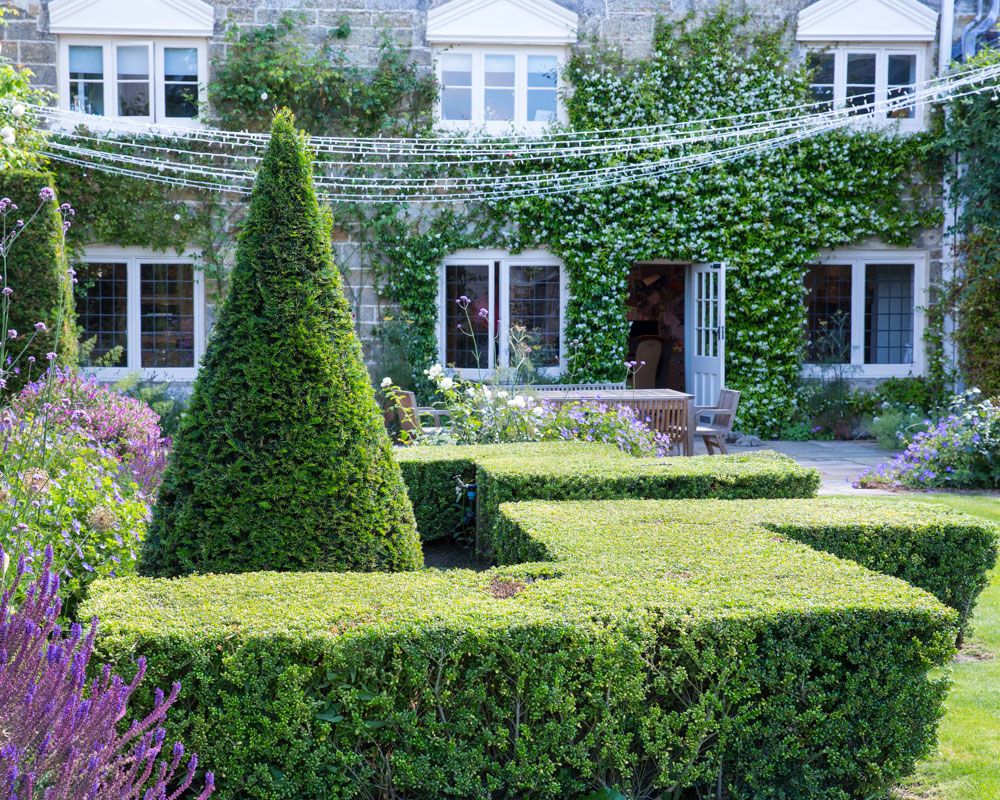
Where should you position a parterre garden?
Position a parterre on a level area of ground. Because they were traditionally designed to be viewed from above, they are often positioned close to a house. For garden patio ideas, symmetrical parterre beds work well either side of a terrace area.
‘Parterres can also be a useful device for when there are ground plain elements that need to be disguised,’ says Jo Thompson.
‘As well as creating a formal structure in a garden close to the house, parterres can hide secrets, such as being designed around existing drains that can’t be moved, subtly hiding them,’ Jo adds.

Are parterre gardens high maintenance?
Parterres have a reputation for being high maintenance, but they don’t have to be. Choose restricted planting, or not to plant within the borders in favour of keeping them simple and low maintenance.
‘I like the architectural simplicity of restricted planting or not planting within a parterre,’ says designer Jo Alderson. ‘I also like to be able to walk through a parterre, so always create designs where you can do this,’ she adds.
A gravel base gravel can disguise a weed suppressant matting, and Jo recommends pathways in bonded gravel as one of the garden paths ideas for ease of maintenance and when sweeping up clippings.
Hedging should need clipping a few times a year, but by keeping the layout elegant but simple, 'it is possible to achieve a beautifully structured parterre without spending hours maintaining it,' says Richard.
What is the difference between a knot garden and a parterre?
The difference between a knot garden and a parterre is not always easy to distinguish. They both have similarities in design.
The knot garden was created in the middle ages where monks would plant gardens of herbs and medicinal plants in ornate patterns. 'They called them embroidery for the earth,' explains Jo Alderson.
Knot gardens were generally very intricate designs, often looking as if the plants were woven under and over each other.
Parterres were a development of the knot garden, with symmetrical beds formed and edged by evergreen clipped hedges in an ornamental design, surrounded by gravel.
Sign up to the Homes & Gardens newsletter
Design expertise in your inbox – from inspiring decorating ideas and beautiful celebrity homes to practical gardening advice and shopping round-ups.
Rachel is senior content editor, and writes gardening content for homesandgardens.com, Homes & Gardens magazine, and its sister titles Period Living Magazine and Country Homes & Interiors. She has written for lifestyle magazines for many years, with a particular focus on gardening, historic houses and arts and crafts, but started out her journalism career in BBC radio, where she enjoyed reporting on and writing programme scripts for all manner of stories. Rachel then moved into regional lifestyle magazines, where the topics she wrote about, and people she interviewed, were as varied and eclectic as they were on radio. Always harboring a passion for homes and gardens, she jumped at the opportunity to work on The English Home and The English Garden magazines for a number of years, before joining the Period Living team.
-
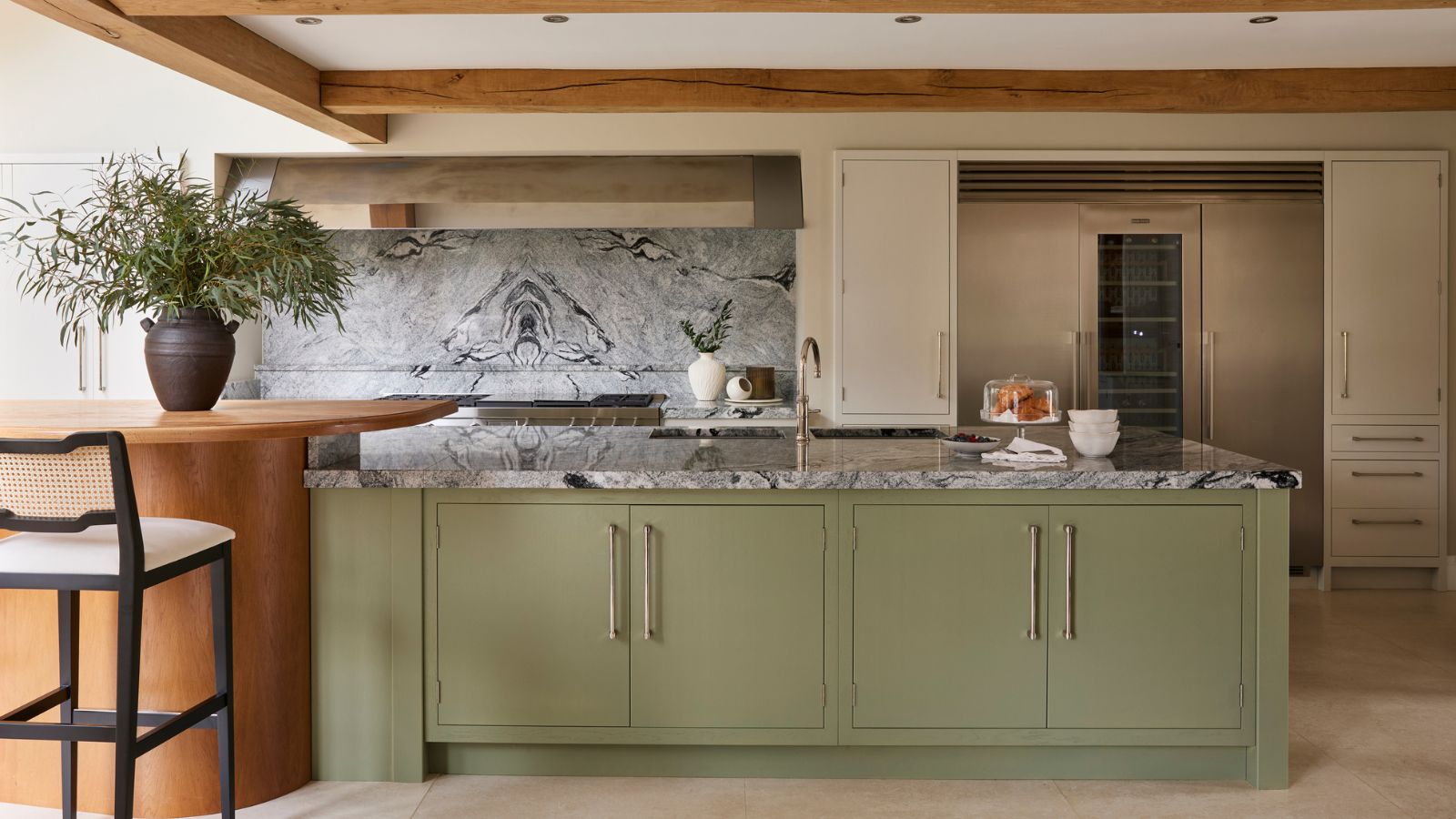 5 freezer cleaning mistakes you must avoid – or risk compromising your food quality and shortening the lifespan of your appliance
5 freezer cleaning mistakes you must avoid – or risk compromising your food quality and shortening the lifespan of your applianceAvoid these blunders for a safer kitchen
By Seraphina Di Mizzurati
-
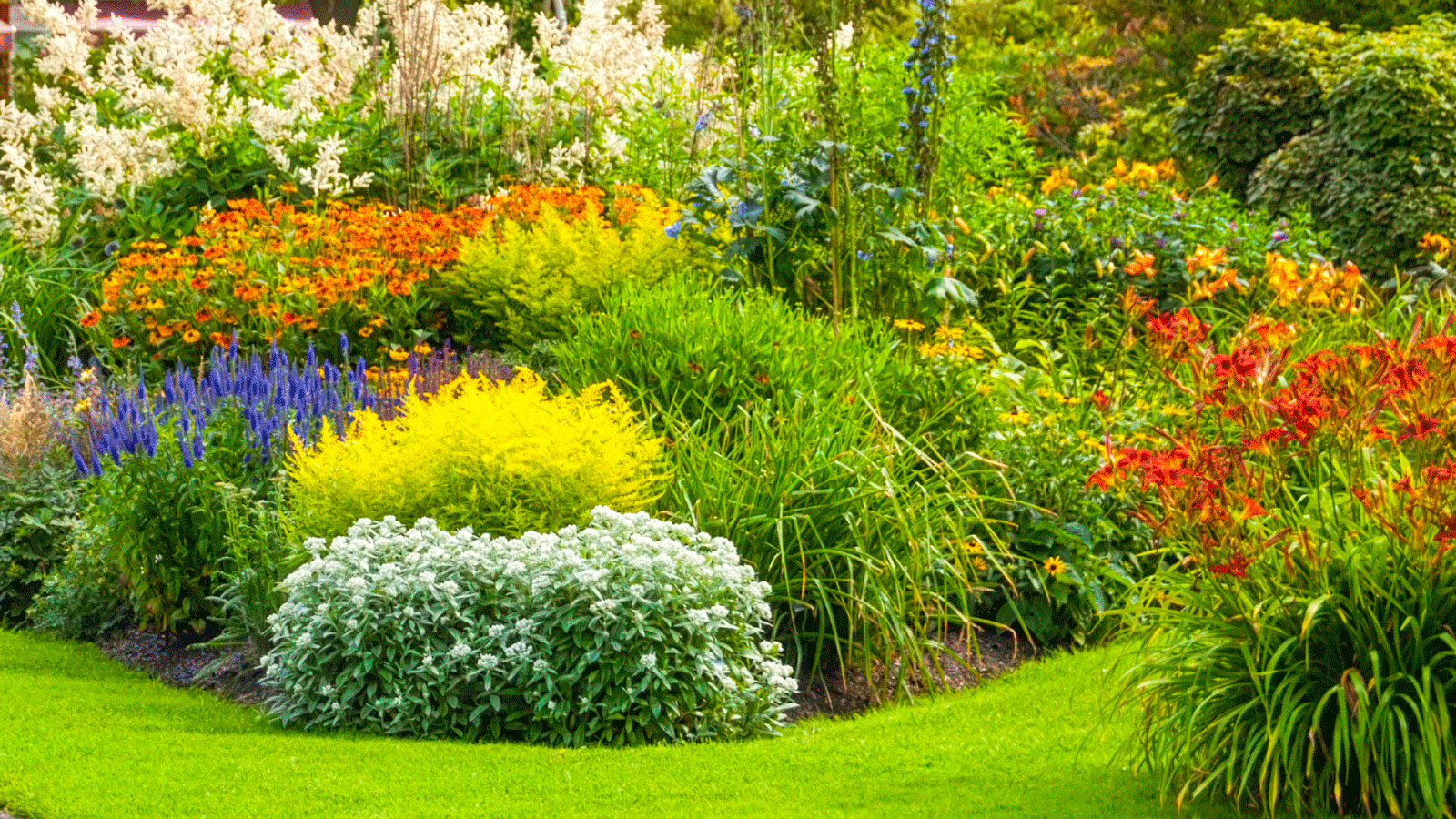 What is an island bed? This clever garden design trick can add privacy and drama to any backyard
What is an island bed? This clever garden design trick can add privacy and drama to any backyardCreate a long-lasting, low-maintenance and visually appealing island bed that also serves a purpose in the garden
By Sarah Wilson